Module 3 Unit 3 Language in use 课件(共25张PPT,含内嵌视频)外研版英语七年级上册
文档属性
| 名称 | Module 3 Unit 3 Language in use 课件(共25张PPT,含内嵌视频)外研版英语七年级上册 | 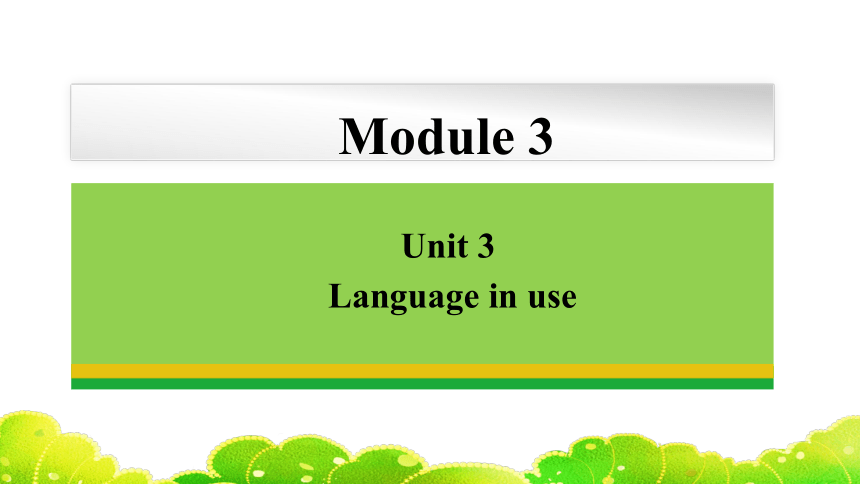 | |
| 格式 | pptx | ||
| 文件大小 | 40.9MB | ||
| 资源类型 | 教案 | ||
| 版本资源 | 外研版 | ||
| 科目 | 英语 | ||
| 更新时间 | 2024-01-18 22:32:47 | ||
图片预览

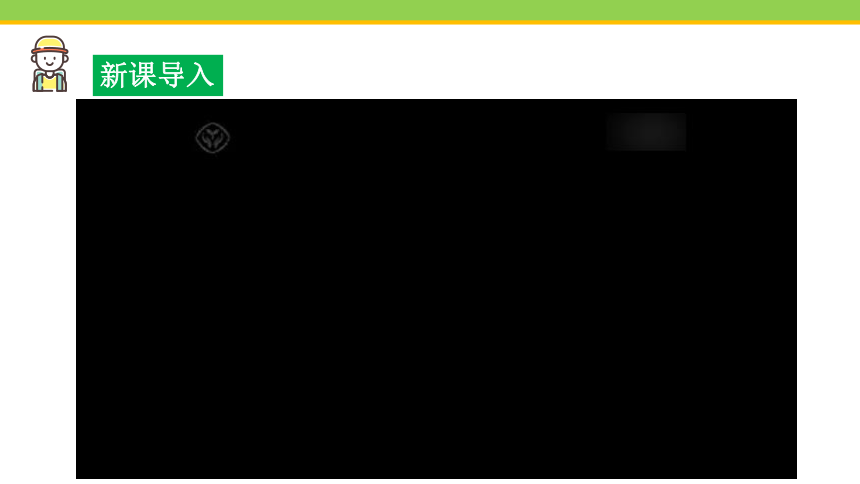
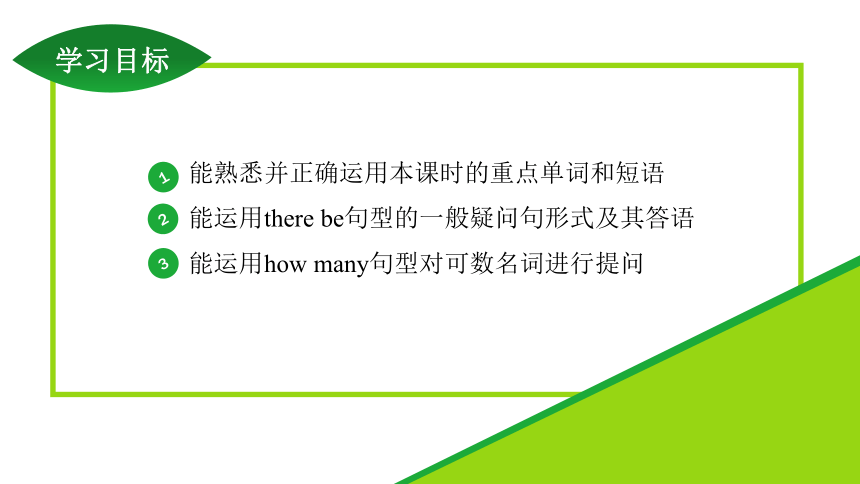
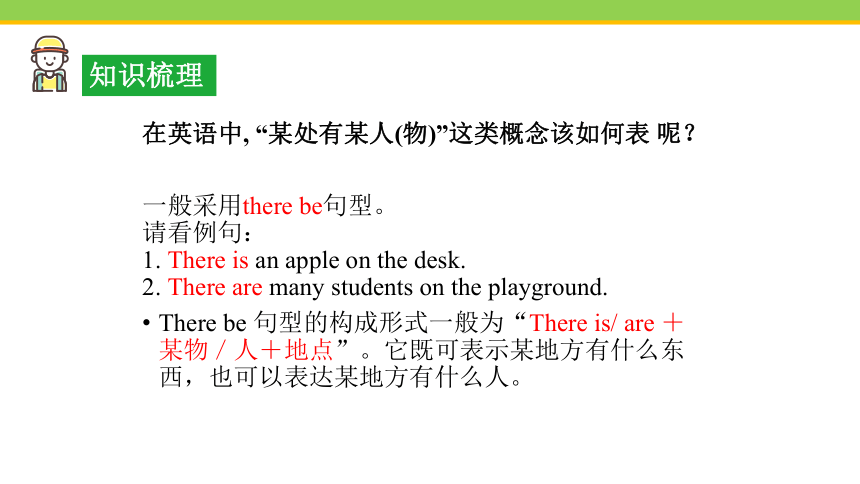
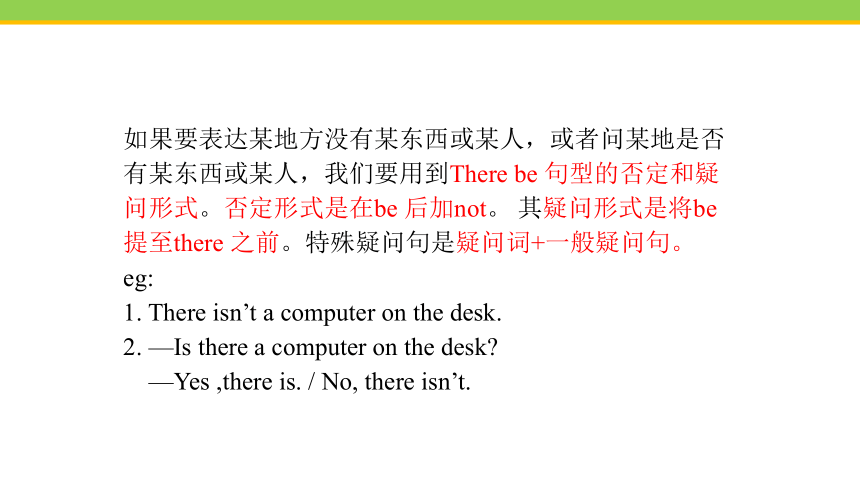
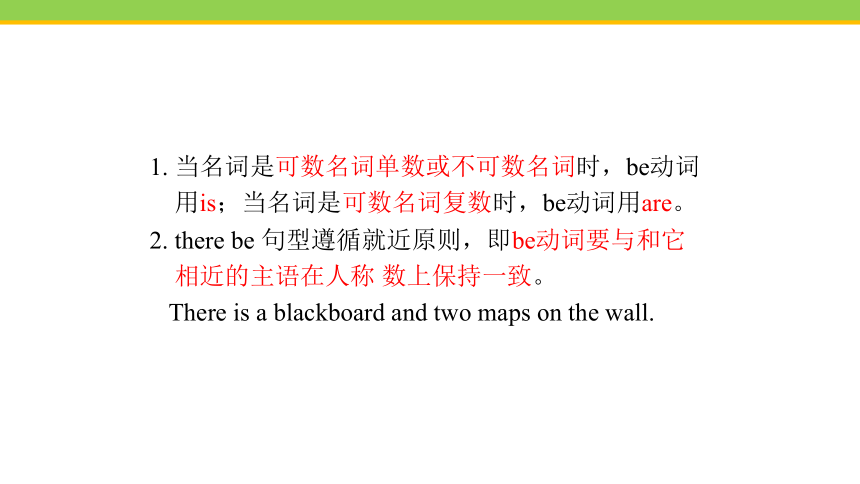
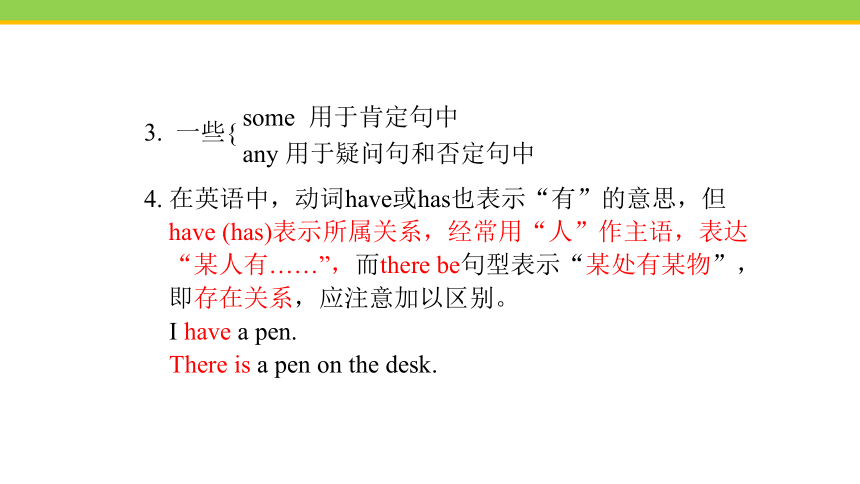
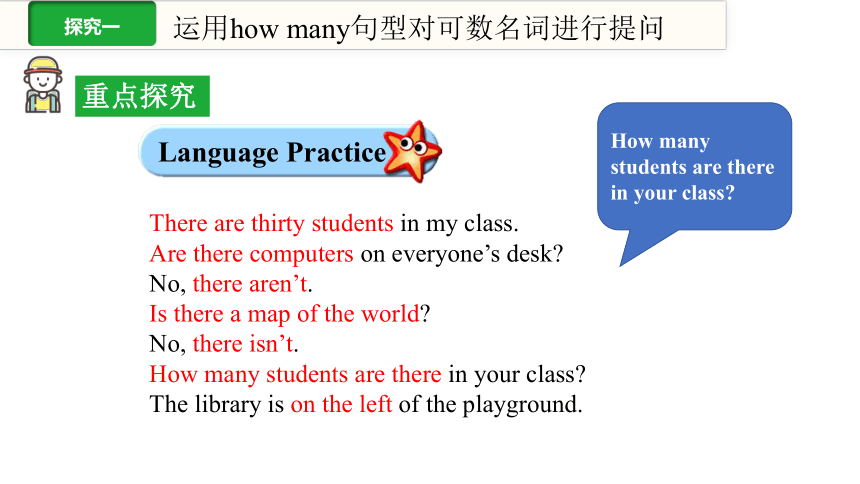
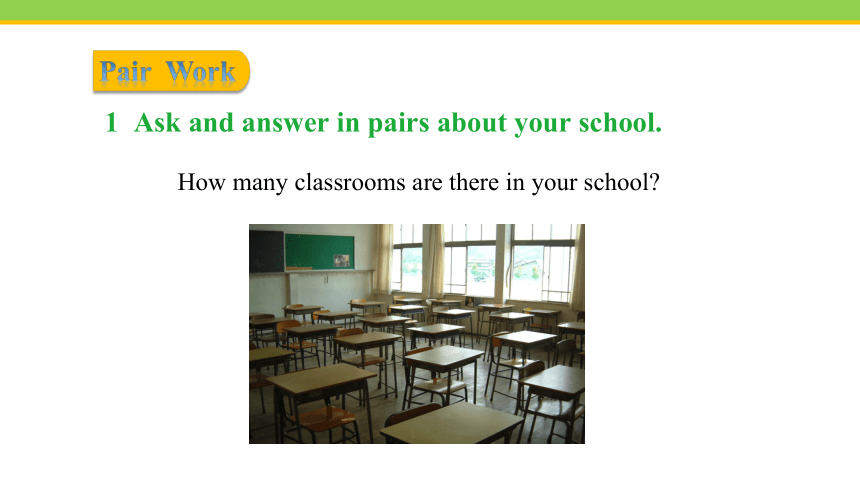
文档简介
(共25张PPT)
Module 3
Unit 3
Language in use
新课导入
能熟悉并正确运用本课时的重点单词和短语
能运用there be句型的一般疑问句形式及其答语
能运用how many句型对可数名词进行提问
2
1
3
知识梳理
一般采用there be句型。
请看例句:
1. There is an apple on the desk.
2. There are many students on the playground.
There be 句型的构成形式一般为“There is/ are +某物/人+地点”。它既可表示某地方有什么东西,也可以表达某地方有什么人。
在英语中, “某处有某人(物)”这类概念该如何表 呢?
如果要表达某地方没有某东西或某人,或者问某地是否
有某东西或某人,我们要用到There be 句型的否定和疑
问形式。否定形式是在be 后加not。 其疑问形式是将be
提至there 之前。特殊疑问句是疑问词+一般疑问句。
eg:
1. There isn’t a computer on the desk.
2. —Is there a computer on the desk
—Yes ,there is. / No, there isn’t.
1. 当名词是可数名词单数或不可数名词时,be动词
用is;当名词是可数名词复数时,be动词用are。
2. there be 句型遵循就近原则,即be动词要与和它
相近的主语在人称 数上保持一致。
There is a blackboard and two maps on the wall.
3. 一些{
4. 在英语中,动词have或has也表示“有”的意思,但have (has)表示所属关系,经常用“人”作主语,表达“某人有……”,而there be句型表示“某处有某物”,即存在关系,应注意加以区别。
I have a pen.
There is a pen on the desk.
some 用于肯定句中
any 用于疑问句和否定句中
运用how many句型对可数名词进行提问
How many students are there in your class
Language Practice
There are thirty students in my class.
Are there computers on everyone’s desk
No, there aren’t.
Is there a map of the world
No, there isn’t.
How many students are there in your class
The library is on the left of the playground.
重点探究
How many classrooms are there in your school
1 Ask and answer in pairs about your school.
Pair Work
How many students are there in your class
How many are boys and how many are girls
How many classroom are there in your school
There are...
How many classrooms are there in your school
How many students are there in your class
How many are boys and how many are girls
Show Time
活动小结:
通过活动,我们可以发现,对可数名词的数量提问,可使用句型:
_________________________________________________。
How many+可数名词复数+are there+介词短语
there be句型的一般疑问句形式及其答语
Is there a computer in your room
there be句型的用法
There are thirty students in my class.
Are there computers on everyone’s desk
No, there aren’t.
Is there a map of the world
No, there isn’t.
How many students are there in your class
The library is on the left of the playground.
Is there a library in your school
Pair Work
Are there any science labs
1. Where is the office building
2. Where is the dining hall
3. Where is the playground
4. Where is the sports hall
5. Where is the science building
2 Look at the picture and answer the questions.
Now complete the passage.
This is a map of our school.(1)_____________the gate is
the office building and behind this is the (2)____________.
(3) _______the classroom building is the library. The
science building is (4)________ the dining hall and the (5)
__________. And behind the dining hall, the playground and
the library there are (6)_____.
On the right of
classroom building
Behind
between
sports hall
trees
school
sports hall
science
building
office
computer
library
book
classroom
desk
blackboard
dining hall
blackboard classroom office
science building sports hall
3 Complete the word map with the words and expressions from the box.
Around the world.
School age
In most countries around the world, children must go to school when they are 5 or 6 years old. Children in the UK go to primary school at 5, and go to secondary school at 11. They can’t leave school before they are 16 years old.
通过以上活动,我们发现there be句型的一般疑问句是:1.________________________,肯定回答是:2.____________________
否定回答是3._____________________。
Is/Are there...
Yes, there is/are.
No, there isn’t /aren’t.
活动小结:
当堂检测
1. There are some photos on the wall.(改为否定句)
There photos on the wall.
2. There is a dictionary on Li Lei’s desk.(改为一般疑
问句,并作肯定回答)
— a dictionary on Li Lei’s desk
—Yes, .
aren’t any
Is there
there is
一、按要求完成句子。
3. There are some flowers on our teacher’s desk.(就画线部分提问)
on your teacher’s desk
4. Daming’s friend is in front of the tree.(就画线部分提问)
Daming’s friend
What’s
Where is
1.提问可数名词数量的句型:
How many +可数名词复数+are there +介词短语
2.there be句型的一般疑问句形式及其答语
重点单词和短语:
classroom, computer, playground, lackboard, hall, behind, between, library, on theleft/right, in front of etc.
Module 3
Unit 3
课堂总结
Module 3
Unit 3
Language in use
新课导入
能熟悉并正确运用本课时的重点单词和短语
能运用there be句型的一般疑问句形式及其答语
能运用how many句型对可数名词进行提问
2
1
3
知识梳理
一般采用there be句型。
请看例句:
1. There is an apple on the desk.
2. There are many students on the playground.
There be 句型的构成形式一般为“There is/ are +某物/人+地点”。它既可表示某地方有什么东西,也可以表达某地方有什么人。
在英语中, “某处有某人(物)”这类概念该如何表 呢?
如果要表达某地方没有某东西或某人,或者问某地是否
有某东西或某人,我们要用到There be 句型的否定和疑
问形式。否定形式是在be 后加not。 其疑问形式是将be
提至there 之前。特殊疑问句是疑问词+一般疑问句。
eg:
1. There isn’t a computer on the desk.
2. —Is there a computer on the desk
—Yes ,there is. / No, there isn’t.
1. 当名词是可数名词单数或不可数名词时,be动词
用is;当名词是可数名词复数时,be动词用are。
2. there be 句型遵循就近原则,即be动词要与和它
相近的主语在人称 数上保持一致。
There is a blackboard and two maps on the wall.
3. 一些{
4. 在英语中,动词have或has也表示“有”的意思,但have (has)表示所属关系,经常用“人”作主语,表达“某人有……”,而there be句型表示“某处有某物”,即存在关系,应注意加以区别。
I have a pen.
There is a pen on the desk.
some 用于肯定句中
any 用于疑问句和否定句中
运用how many句型对可数名词进行提问
How many students are there in your class
Language Practice
There are thirty students in my class.
Are there computers on everyone’s desk
No, there aren’t.
Is there a map of the world
No, there isn’t.
How many students are there in your class
The library is on the left of the playground.
重点探究
How many classrooms are there in your school
1 Ask and answer in pairs about your school.
Pair Work
How many students are there in your class
How many are boys and how many are girls
How many classroom are there in your school
There are...
How many classrooms are there in your school
How many students are there in your class
How many are boys and how many are girls
Show Time
活动小结:
通过活动,我们可以发现,对可数名词的数量提问,可使用句型:
_________________________________________________。
How many+可数名词复数+are there+介词短语
there be句型的一般疑问句形式及其答语
Is there a computer in your room
there be句型的用法
There are thirty students in my class.
Are there computers on everyone’s desk
No, there aren’t.
Is there a map of the world
No, there isn’t.
How many students are there in your class
The library is on the left of the playground.
Is there a library in your school
Pair Work
Are there any science labs
1. Where is the office building
2. Where is the dining hall
3. Where is the playground
4. Where is the sports hall
5. Where is the science building
2 Look at the picture and answer the questions.
Now complete the passage.
This is a map of our school.(1)_____________the gate is
the office building and behind this is the (2)____________.
(3) _______the classroom building is the library. The
science building is (4)________ the dining hall and the (5)
__________. And behind the dining hall, the playground and
the library there are (6)_____.
On the right of
classroom building
Behind
between
sports hall
trees
school
sports hall
science
building
office
computer
library
book
classroom
desk
blackboard
dining hall
blackboard classroom office
science building sports hall
3 Complete the word map with the words and expressions from the box.
Around the world.
School age
In most countries around the world, children must go to school when they are 5 or 6 years old. Children in the UK go to primary school at 5, and go to secondary school at 11. They can’t leave school before they are 16 years old.
通过以上活动,我们发现there be句型的一般疑问句是:1.________________________,肯定回答是:2.____________________
否定回答是3._____________________。
Is/Are there...
Yes, there is/are.
No, there isn’t /aren’t.
活动小结:
当堂检测
1. There are some photos on the wall.(改为否定句)
There photos on the wall.
2. There is a dictionary on Li Lei’s desk.(改为一般疑
问句,并作肯定回答)
— a dictionary on Li Lei’s desk
—Yes, .
aren’t any
Is there
there is
一、按要求完成句子。
3. There are some flowers on our teacher’s desk.(就画线部分提问)
on your teacher’s desk
4. Daming’s friend is in front of the tree.(就画线部分提问)
Daming’s friend
What’s
Where is
1.提问可数名词数量的句型:
How many +可数名词复数+are there +介词短语
2.there be句型的一般疑问句形式及其答语
重点单词和短语:
classroom, computer, playground, lackboard, hall, behind, between, library, on theleft/right, in front of etc.
Module 3
Unit 3
课堂总结
同课章节目录
- Starte
- Module 1 My teacher and my friends
- Module 2 My English lesson
- Module 3 My English book
- Module 4 My everyday life
- Module 1 My classmates
- Unit 1 Nice to meet you.
- Unit 2 I'm Wang Lingling and I'm thirteen years ol
- Unit 3 Language in use.
- Module 2 My family
- Unit 1 Is this your mum?
- Unit 2 These are my parents.
- Unit 3 Language in use.
- Module 3 My school
- Unit 1 There are thirty students in my class.
- Unit 2 The library is on the left of the playgroun
- Unit 3 Language in use.
- Module 4 Healthy food
- Unit 1 We've got lots of apples.
- Unit 2 Is your food and drink healthy?
- Unit 3 Language in use.
- Module 5 My school day
- Unit 1 I love history.
- Unit 2 We start work at nine o'clock.
- Unit 3 Language in use.
- Revision module A
- Module 6 A trip to the zoo
- Unit 1 Does it eat meat?
- Unit 2 The tiger lives in Asia.
- Unit 3 Language in use.
- Module 7 Computers
- Unit 1 How do I write my homework on the computer?
- Unit 2 When do you use a computer?
- Unit 3 Language in use.
- Module 8 Choosing presents
- Unit 1 I always like birthday parties.
- Unit 2 She often goes to concerts.
- Unit 3 Language in use.
- Module 9 People and places
- Unit 1 We're enjoying the school trip a lot.
- Unit 2 They're waiting for buses or trains.
- Unit 3 Language in use.
- Module 10 Spring Festival
- Unit 1 Are you getting ready for Spring Festival?
- Unit 2 My mother's cleaning our houses and sweepin
- Unit 3 Language in use.
- Revision module B
